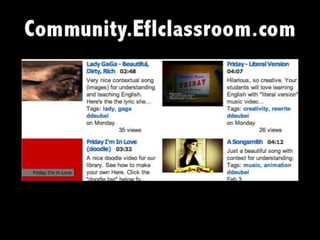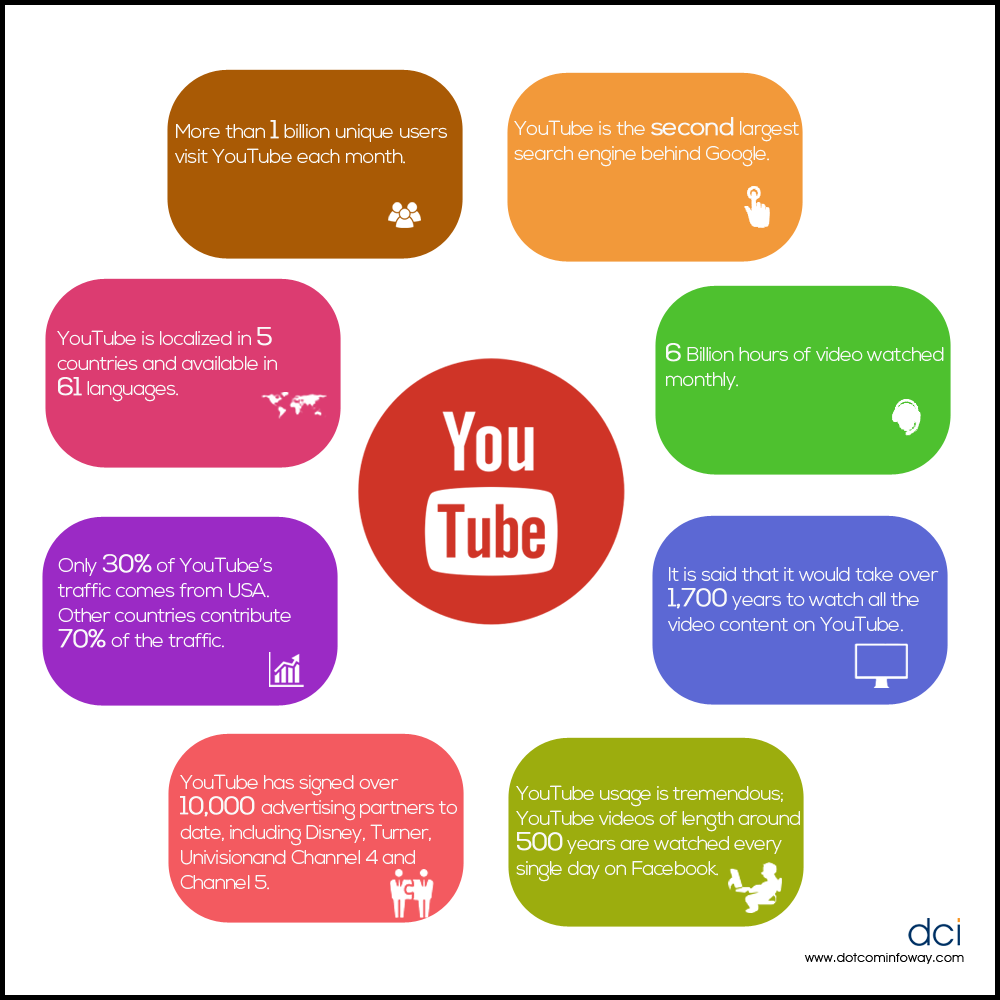Welcome to our comprehensive guide on understanding adult content on YouTube! In this post, we’ll explore YouTube’s content policies and dive into the realities of adult content on the platform. Whether you're a creator or just a casual viewer, it's crucial to be aware of the guidelines that shape what can and can’t be shared. Grab a cup of coffee, and let’s get started!
Understanding YouTube's Content Policies

YouTube has a set of community guidelines designed to create a safe environment for all users. These guidelines dictate what content is acceptable and what crosses the line into adult content. Here's an overview of key aspects of these policies:
- Nudity and Sexual Content: YouTube prohibits content that contains explicit sexual acts or pornography. This means any video that focuses on sexual acts or contains nudity meant to cause sexual arousal will be removed.
- Thumbnails and Titles: Even if the content itself is not explicitly adult, misleading thumbnails or titles that suggest sexual content are also against YouTube's policies.
- Age Restrictions: Videos with mature themes may require viewers to confirm their age before viewing. Creators should understand how to implement these restrictions correctly.
- Violence and Harassment: In addition to sexual content, any content that promotes violence or harassment towards individuals is strictly prohibited, ensuring YouTube is a safe space for everyone.
Creators are responsible for adhering to these policies. If a video doesn’t align with the guidelines, it can lead to monetization restrictions, age-restrictions, or outright removal from the platform. It’s essential to review policies regularly since YouTube updates its guidelines frequently.
Moreover, YouTube employs a mix of automated systems and human reviewers to monitor content. If a video gets flagged for review, it’s crucial for creators to understand the basis of any disputes and appeal process if they believe their content was unfairly taken down. Engaging with the YouTube community responsibly ensures a more enjoyable experience for everyone.
Also Read This: Does YouTube Music Play in the Background? A Guide to Using YouTube Music While Multitasking
The Presence of Adult Content on YouTube

While YouTube is primarily known for its diverse range of content — from vlogs to educational channels — adult content still finds its way onto the platform, albeit often in a nuanced manner. It's essential to separate actual adult content from various shades of what some might perceive as "adult." Here’s a closer look:
- Types of Adult Content:
- Sexual Tension and Suggestive Themes: Many videos may not be explicitly sexual but can have suggestive themes or innuendos that can lead to some confusion regarding YouTube’s guidelines.
- Adult Humor or Discussions: Content that discusses adult themes or sexual education in a humorous way often leads to a fine line with what is acceptable.
- Content Creators and Their Choices: Many creators aim to keep their content family-friendly to reach a wider audience. However, some choose to delve into more mature topics, understanding the risks of monetization or potential community guidelines strikes.
- YouTube and Its Impact: The platform continues to grow, and adult content's subtle forms can lead to debates about censorship, freedom of expression, and the responsibilities of both creators and the platform.
It's essential to approach adult content on YouTube with a discerning eye. While explicit adult content is banned, videos that contain suggestive themes can still appear appealing but might navigate the gray areas of the policy. Always remember, viewer discretion is advised! For parents and guardians, utilizing parental controls can help ensure younger viewers are protected from content that may not be suitable for them.
In conclusion, understanding YouTube’s adult content policies and recognizing the complexities of adult themes on the platform is vital for creators and viewers alike. Stay informed, stay respectful, and enjoy all that YouTube has to offer!
Also Read This: Learn How to Burn CDs with Your Favorite YouTube Videos
3. Age Restrictions and Content Ratings

When navigating the vast sea of YouTube videos, it's crucial to understand the various age restrictions and content ratings that help users differentiate between suitable and inappropriate material. YouTube, recognizing the need to protect younger audiences, has implemented several measures that classify content based on its suitability for different age groups.
YouTube employs a system of age restrictions primarily aimed at preventing minors from accessing explicit or inappropriate content. The platform has a defined set of guidelines that govern what can and cannot be viewed based on age. Here’s a quick breakdown of how it works:
- General Audience: This content is suitable for all ages. It includes family-friendly vlogs, educational videos, and wholesome entertainment.
- PG (Parental Guidance): Videos labeled as PG may contain some material that parents may find unsuitable for younger children. This could range from mild language to themes that are more mature but not explicit.
- PG-13: Content rated PG-13 may not be suitable for children under 13. This might include moderate violence, suggestive themes, or more intense content that requires discretion by parents.
- R (Restricted): R-rated content is intended for mature audiences only. These videos might feature explicit content, strong language, or graphic imagery. Viewers under 17 require an accompanying parent or guardian to view such material.
YouTube's age restriction feature kicks in primarily for videos that contain explicit sexual content, graphic violence, or hate speech. When a video falls into these categories, viewers are prompted with a warning if they attempt to access it while logged into an account that reflects an age under 18.
Additionally, users can adjust their content settings through their account preferences. By setting their account to “Restricted Mode,” users can filter out potentially mature content, providing a slightly safer browsing experience, especially for younger users. However, it’s important to note that this feature isn't foolproof—it may mistakenly block some appropriate content while allowing some not suitable for younger viewers through.
Ultimately, understanding these ratings and age restrictions can help users navigate YouTube more safely, ensuring that they—or their children—are engaging with content appropriate for their age and maturity level.
Also Read This: Did CoryxKenshin Quit YouTube in 2023 and What’s the Latest Update?
4. How YouTube Filters Adult Content
YouTube employs a range of sophisticated mechanisms to filter out adult content, ensuring that users have a safer experience on the platform. So, how exactly does this giant video-sharing platform manage to strike a balance between creative freedom and the necessary restrictions to protect its viewers?
First and foremost, YouTube utilizes advanced algorithms that analyze videos for inappropriate content. These algorithms consider a variety of factors, including:
- Keywords: The platform scans titles, descriptions, and tags for explicit language that indicates adult content.
- Visual and Audio Signals: AI technology can also analyze the visuals and sounds in videos. This means that it can recognize violent scenes or sexually explicit material even if it's not explicitly mentioned in the text.
- User Feedback: Reports from users play a significant role in identifying content that may not comply with YouTube’s guidelines. If a video gets flagged multiple times, it is reviewed by the moderation team.
In addition to algorithms, YouTube employs a team of human moderators who review flagged content for compliance with community guidelines. This layer of human oversight helps capture nuances that AI might miss, ensuring a more accurate assessment of what constitutes adult content.
For users concerned about stumbling upon inappropriate material, YouTube offers a feature known as Restricted Mode. When enabled, this setting filters out content that may be deemed inappropriate for certain audiences. It's a useful tool for parents and educators aiming to create a safer viewing environment for children and young adults.
Moreover, creators are encouraged to mark content as 'Not for Kids' if it contains adult themes, ensuring that their audience is appropriately informed before viewing. This self-regulation by content creators, combined with YouTube’s filtering technologies, aims to minimize the exposure of adult content to inappropriate audiences.
In conclusion, while no system is perfect, YouTube's combination of technology, user feedback, and human moderation works diligently to filter out adult content and provide its users with a safer online environment. As with any platform, remaining vigilant and informed helps everyone navigate these digital waters more safely.
Also Read This: Why Is My YouTube Video Dark? Fixing Video Brightness and Quality Issues
5. What to Do if You Encounter Inappropriate Content
So, you've stumbled upon a video on YouTube that just didn't sit right with you. Whether it was explicit language, graphic images, or something that made you feel uncomfortable, it’s essential to know that you’re not alone and there are steps you can take. Here’s a quick guide on what to do if you encounter inappropriate content:
- Do Not Engage: This is probably the first rule. Engaging with inappropriate content can sometimes make the situation worse. Instead of leaving comments or reactions that might escalate matters, step back and assess how to report the issue.
- Report the Video: YouTube offers a built-in reporting feature that you can use to flag inappropriate content. Simply click on the three dots (or the “More” option) below the video and select “Report.” Follow the prompts to categorize the type of abuse (e.g., sexual content, hate speech, etc.). This helps YouTube's moderation team address the issue.
- Block the Channel: If a particular channel consistently shares inappropriate content, you can block them. Click on the channel name, navigate to their homepage, and find the option to block. This way, you won't be subjected to their content in the future.
- Provide Feedback: After reporting, consider giving feedback to YouTube. The platform values user input, and this can help improve their filter algorithms over time.
- Educate Others: If you know friends or family members who might also be utilizing YouTube, talk to them about your experience. Share insights into the types of content to be vigilant about. Sometimes, an informed viewer can prevent the spread of inappropriate material.
YouTube has a responsibility to maintain a safe environment for its users, and by reporting inappropriate content, you’re doing your part to help the platform stay that way. Just remember, the internet is a vast space, and it’s essential to ensure we all contribute to a safer online community.
Also Read This: How to Watch YouTube on VR: A Simple Guide
6. Tips for Keeping Your YouTube Experience Family-Friendly
As a parent, guardian, or even a concerned friend, ensuring a family-friendly experience on YouTube can feel daunting at times. But don't worry! There are several practical steps you can take to create a safer viewing environment for everyone. Here are some top tips:
- Use Restricted Mode: This feature helps filter out potentially mature content. To enable it, scroll down to the bottom of the YouTube homepage, click on the "Restricted Mode" drop-down menu and switch it on. This is not foolproof but can significantly reduce the chances of inappropriate content popping up.
- Curate Playlists: Create custom playlists filled with videos you know are appropriate. This way, you can guide viewers towards specific content while steering clear of anything that might be undesirable.
- Monitor Viewing History: Keep an eye on what your family members are watching. Review the "Watch History" section to spot any inappropriate videos and have an open conversation about why they might not be suitable.
- Encourage Communication: Set up a family agreement about what kind of content is appropriate. Encourage kids to come to you if they see something unsettling, fostering an open dialogue about their online experiences.
- Explore Kid-Friendly Alternatives: Consider directing younger users towards platforms designed specifically for kids, such as YouTube Kids. These services feature curated content that’s been filtered for the younger audience.
In the vast digital world that is YouTube, a little precaution can go a long way. By taking proactive measures and setting boundaries, you can ensure that the experience remains enjoyable and safe for everyone in the family!
Also Read This: How to Block YouTube Access on a Fire TV Device
7. Alternatives to YouTube for Family-Friendly Content
While YouTube is a widely popular platform for video content, it isn’t the only place to find engaging and family-friendly entertainment. If you’re seeking alternatives that prioritize safety and age-appropriateness, you’re in luck! Here are some great options:
- TikTok: Although it has gained attention for its short videos, parents can find plenty of family-friendly content. There are even specific hashtags to explore, focusing on educational materials or fun challenges that everyone can enjoy.
- Vimeo: This platform is known for its creative content, including artistic films and documentaries. It has a more curated selection compared to YouTube, making it a safer choice for families.
- Kids’ YouTube: A subset of the main YouTube, this platform is specifically designed for younger audiences. It features cartoons, educational videos, and kid-friendly shows without the risk of inappropriate content.
- PBS Kids: Offering a treasure trove of educational and entertaining videos, PBS Kids is a fantastic place for children to learn about the world through their favorite characters.
- Netflix: While primarily known for movies and series, Netflix has a solid collection of family and kid-focused content, including animated series and educational programming that are both fun and safe.
- Disney+: Home to beloved Disney classics, Pixar films, animated series, and Marvel content, this platform ensures that families can enjoy a range of family-friendly options.
- Facebook Watch: Facebook offers a variety of short shows and clips that can be enjoyed by all ages. It's a good way to explore content made by friends or companies without diving into the vastness of YouTube.
Each of these platforms has its own unique features and content offerings, making them viable alternatives for families seeking entertainment that aligns with their values. Just like with YouTube, parental supervision is still recommended to navigate options that best fit your family’s viewing preferences.
8. Conclusion: Navigating YouTube Safely
In the digital era, YouTube serves as an essential part of how many of us consume video content. However, it’s crucial to be aware of the potential dangers that come with open platforms, especially when children are involved. Practicing safe navigation on YouTube can make a world of difference. Here are some key points to keep in mind:
- Set Up Parental Controls: Utilize YouTube's built-in parental control features and consider using third-party apps to block inappropriate content. This provides an extra layer of security for your kids.
- Regularly Monitor Viewing Habits: Keep an eye on what your kids are watching. Discuss their favorite channels and programs, ensuring they’re appropriate and educational.
- Educate Your Kids: Talk to your children about the content they encounter. Teach them to recognize inappropriate material and encourage them to come to you with concerns.
- Create a Family Account: Setting up a shared account can help you manage subscriptions and curated playlists that are safe for the entire family.
- Encourage Alternative Platforms: Introduce your family to the family-friendly alternatives mentioned earlier. This expands their viewing options while keeping inappropriate content at bay.
By taking proactive steps, parents and guardians can create a safe and enjoyable YouTube experience. The key is communication and awareness. Above all, remember that the vast world of online content is ultimately a tool for learning and enjoyment, and with the right approach, it can be a positive addition to your family’s life.
 admin
admin








